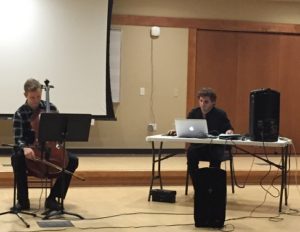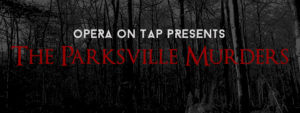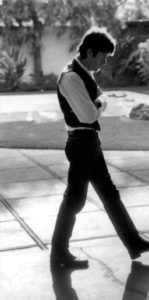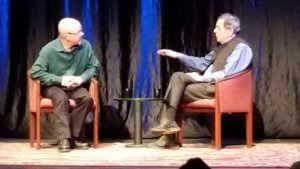 On Saturday, November 18, 2017, the Walt Disney Concert Hall in downtown Los Angeles was given over to Noon to Midnight, an entire day of performances by local new music groups. A line of taco trucks extended along Grand Avenue and a pleasantly festive atmosphere prevailed as large crowds surged in and around the facility. The centerpiece event was War of the Worlds, a new experimental opera by Annie Gosfield, conducted by Christopher Rountree and directed by Yuval Sharon. In addition, some 20 different pop-up concerts were scheduled, regrettably timed so that it was impossible to hear everything. Here are four that I managed to attend.
On Saturday, November 18, 2017, the Walt Disney Concert Hall in downtown Los Angeles was given over to Noon to Midnight, an entire day of performances by local new music groups. A line of taco trucks extended along Grand Avenue and a pleasantly festive atmosphere prevailed as large crowds surged in and around the facility. The centerpiece event was War of the Worlds, a new experimental opera by Annie Gosfield, conducted by Christopher Rountree and directed by Yuval Sharon. In addition, some 20 different pop-up concerts were scheduled, regrettably timed so that it was impossible to hear everything. Here are four that I managed to attend.
The Grand Plaza venue is a wide patio outside of Disney Hall with a brick stairway leading down to the corner of Grand Avenue and First Street. Rage Thormbones, Matt Barbier and Weston Olencki, were stationed in a somewhat sheltered corner of this space, near the glass doors leading inside. Two large speakers with a computer table completed the setup as a crowd gathered at the appointed time.
The first piece was the world premiere of For George Lewis, by Sam Pluta, commissioned by the performers. The two trombonists, equipped with special mutes connected to the computer and speaker system, began playing. At first there was some clicking and popping, and this rapidly escalated into a series of explosions and arcade-like sounds that boomed out into the open air. There was nothing heard in any sequence that sounded like an actual trombone; the mutes blocked the vibrations from exiting the horn and passed them instead to the computer. A series of foot pedals allowed each player to select various digital processing modes and the horns essentially became acoustic joysticks manipulating the output to the speakers. All sorts of electronic sounds poured from the speakers: there was the growling of an industrial buzz saw, space battle sounds, and even a series of squeaky, bird-like sounds. All of this was played with enthusiastic abandon by Barbier and Olencki who were fully committed to this novel form of trombone expression.
The volume and intensity of this piece, with it’s unexpected timbres and texture, was well-matched to the occasion and to the venue. At times it seemed as if a War of the Worlds was in progress right on the patio. Rage Thormbones battled the formidable traffic noises out on Grand Avenue, and actually prevailed. For George Lewis proved to be an intriguing adaptation of acoustic brass to real-time computer processing and the results validated both the power and the versatility inherent in this partnership.
A second world premiere, Periphery for 2, by Catherine Lamb followed. For this Barbier and Olencki used standard mutes for a more conventional trombone sound. Low, sustained tones were heard, subdued and solemn, especially so after the previous piece. A slight dissonance created a lonely, plaintive feel that continued throughout. There was a beautiful organic sensibility to this, like hearing the soft sighing of the wind in a remote canyon, and the audience was completely engaged. For the most part, Periphery for 2 was clearly audible, even in the presence of the ambient street noise. A stray car horn or the passing thump of a helicopter would occasionally intrude, but never impaired the pleasure of hearing this gently unfolding work.




